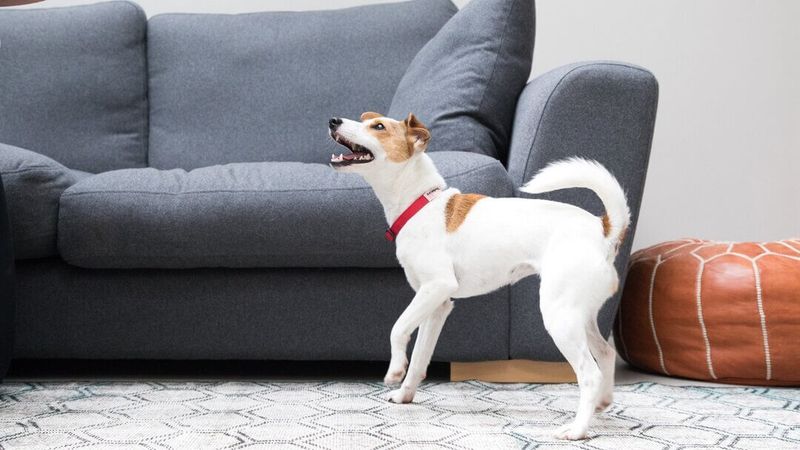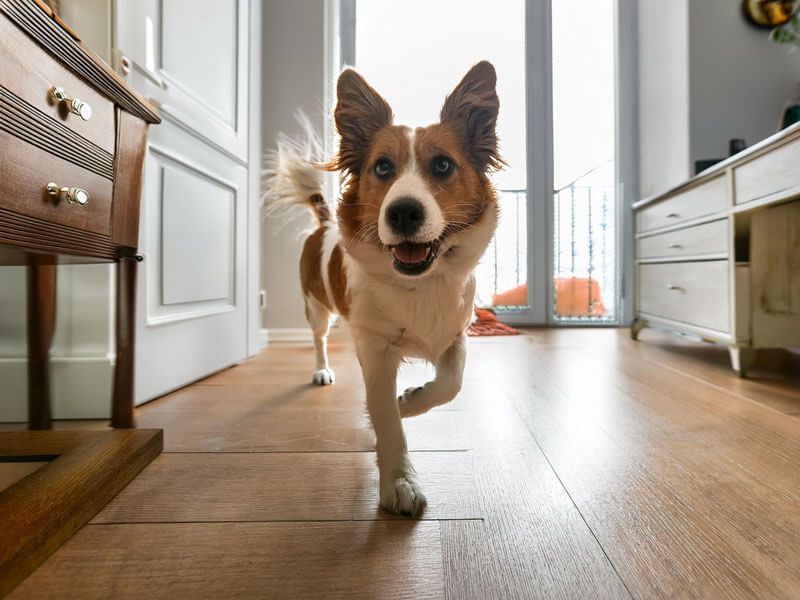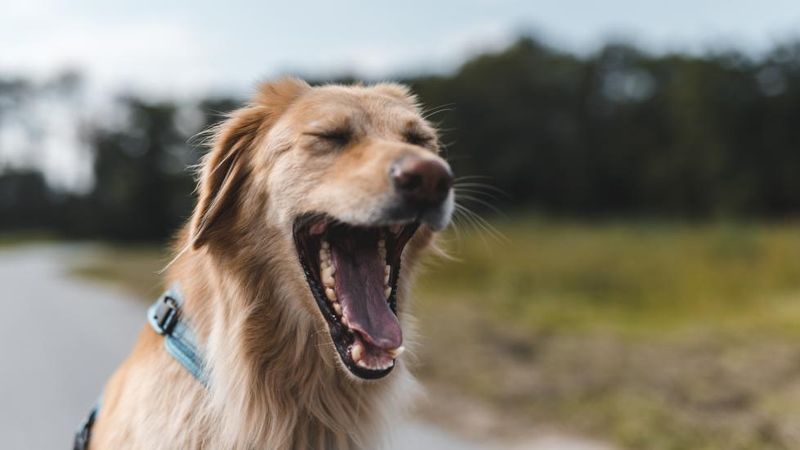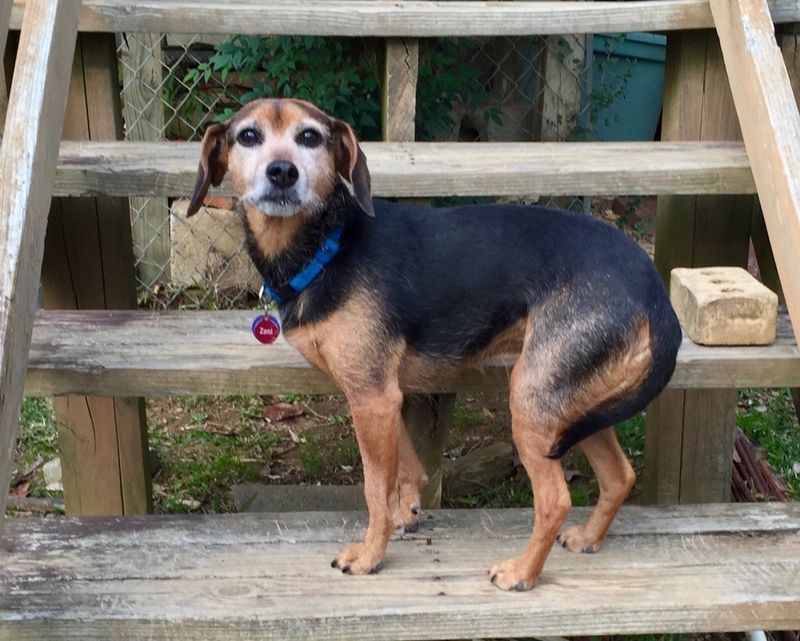Understanding the signs of stress in dogs is essential for any pet owner. Dogs, like humans, can experience stress due to various factors, and recognizing these signs early can help provide them with the necessary comfort and care. This guide explores 13 signs that your dog may be stressed and offers practical tips on how to soothe them. From behavioral changes to physical symptoms, these insights aim to help you create a more calming environment for your furry friend.
Excessive Barking or Whining
Barking or whining can be more than just a means of communication. When it becomes excessive, it’s often a sign of stress. Dogs might bark excessively when they’re lonely or if there’s a disruption in their routine.
Try to identify the cause of this behavior. Could it be a new neighbor or an unfamiliar noise? Engaging your dog in play or providing interactive toys can distract them and reduce stress.
Calm, gentle reassurance often helps in soothing your dog’s nerves, making them feel safe and secure in their environment.
Destructive Behavior
Notice your dog chewing on furniture or tearing up cushions? Destructive behavior can indicate stress. Dogs often resort to such activities when they’re bored or anxious.
Offering puzzle toys or chew items can redirect this energy. Regular exercise is crucial to release pent-up emotions.
Creating a consistent routine with positive reinforcement can also mitigate anxiety. Dogs thrive on predictability, so maintaining a stable environment can curb destructive tendencies. Understanding the underlying cause, whether it’s separation anxiety or fear, is essential to address this behavior.
Loss of Appetite
Is your furry friend suddenly uninterested in their meals? Loss of appetite is a clear signal that something might be amiss. Stress can cause dogs to shy away from food, affecting their overall health.
Maintaining a calm feeding environment without distractions can encourage eating. Sometimes, offering hand-fed meals with gentle encouragement works wonders.
Consulting a veterinarian is advisable if the problem persists. Identifying stressors, such as loud noises or changes in the household, can help in restoring their appetite and ensuring they receive proper nutrition.
Pacing and Restlessness
Have you ever seen your dog pacing back and forth, unable to settle down? This restlessness is a common sign of stress. Dogs may feel anxious due to changes in their environment or routines.
Providing a quiet, secure space can help. Consider offering a favorite toy or blanket to comfort them. Engaging in regular exercise may also alleviate their excess energy.
Understanding your dog’s triggers and minimizing them can make a significant difference. Whether it’s the sound of thunder or a new pet in the house, recognizing and addressing these issues can help your dog feel more at ease.
Excessive Licking or Chewing
Dogs often lick or chew themselves to cope with stress or anxiety. This compulsive behavior can lead to skin irritations, requiring attention.
Providing mental stimulation through games and activities can divert their focus. Offering soothing pet-safe balms may also provide relief.
Understanding triggers and minimizing exposure is key. Whether it’s separation from a family member or a new environment, addressing these stressors can help your dog feel more comfortable and secure in their surroundings.
Shivering or Trembling
Trembling may not always be due to cold weather. Dogs often shiver when they’re scared or stressed. This can be seen during thunderstorms or fireworks.
Creating a safe haven with blankets and familiar scents can comfort them. Playing calming music or using pheromone diffusers may further relax them.
Recognizing the cause of the fear is crucial for long-term solutions. Avoiding exposure to fear-inducing situations and using positive reinforcement can gradually build their confidence and trust.
Hiding or Withdrawal
Does your dog retreat to a quiet corner or hide under furniture? Withdrawal can be a sign of stress or fear. Some dogs hide when faced with unfamiliar guests or changes in their surroundings.
Creating a safe space they can retreat to at their own will can provide solace. Encouraging socialization with gentle exposure to new situations can gradually ease their anxiety.
Offering comfort through familiar objects or scents often helps in calming them. Building a strong bond of trust and understanding is vital in supporting them through stressful times.
Yawning or Lip Licking
Yawning and lip licking can be more than mere physical actions; they often indicate stress. Dogs may exhibit these behaviors when they feel uncomfortable or anxious.
Observing these signs, especially in new environments or social settings, can help in taking timely action. Offering a calm, reassuring presence and slowly removing stressors can alleviate unease.
Engaging in gentle play or providing a distraction can shift their focus. Recognizing and responding to these subtle cues helps in maintaining their emotional well-being.
Panting or Drooling
Excessive panting or drooling can be a response to stress rather than heat. Dogs might pant heavily when they’re anxious or nervous.
Ensuring they have access to fresh water and a cool environment is essential. Offering gentle petting and soft-spoken words can comfort them.
Understanding the context, such as a visit to the vet or a car ride, can help identify the cause. Addressing these stressors with patience and care fosters a sense of security and calm.
Aggression or Irritability
Aggression isn’t always a sign of a problematic dog; it can be a cry for help. Stress can manifest as irritability or aggressive behavior, especially if they feel threatened.
Identifying triggers like loud noises or unfamiliar surroundings is crucial. Offering a calm, controlled environment with clear boundaries helps manage this behavior.
Professional training or consulting a behaviorist may be necessary for persistent issues. Building trust with positive reinforcement encourages a more relaxed and confident demeanor in your dog.
Frequent Urination or Accidents
Indoor accidents can be embarrassing but often signal stress or anxiety in dogs. Frequent urination or accidents may occur when they’re scared or uneasy.
Establishing a routine with regular bathroom breaks helps prevent this issue. Offering praise and rewards for outdoor success reinforces positive behavior.
Understanding and addressing any underlying anxiety, such as separation from the owner or changes in the household, is vital. Communication and patience are key in helping them regain confidence and control.
Changes in Sleep Patterns
Is your dog sleeping more or less than usual? Changes in sleep patterns can indicate stress or discomfort. Your dog might sleep excessively to escape stress or have trouble settling down.
Creating a comfortable sleeping area with minimal disturbances promotes restful sleep. Maintaining a consistent routine and offering calming activities before bedtime can improve their rest.
Monitoring their sleep and identifying disruptions allows you to address and remedy underlying issues, ensuring they receive the rest they need for overall well-being.
Tail Tucking
A tucked tail is a universal sign of fear or anxiety in dogs. When feeling vulnerable, dogs often tuck their tails between their legs.
Offering reassurance through calm, soothing words, and gentle petting can help. Building confidence through positive experiences and gradual exposure to new scenarios eases their fears.
Recognizing this sign and responding with care fosters trust and helps your dog feel more secure in different environments. It’s a crucial step in nurturing a happy and confident companion.













